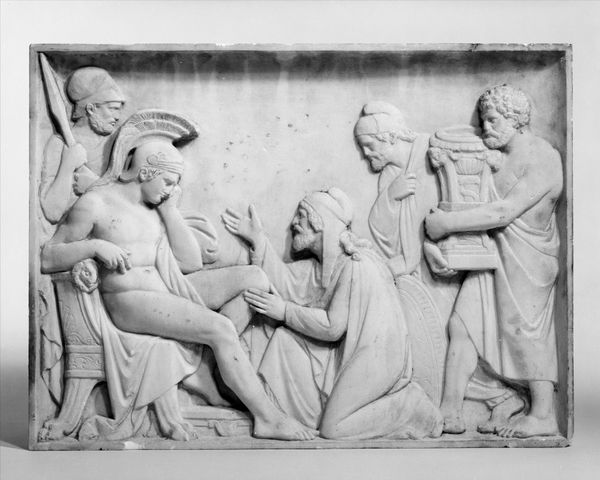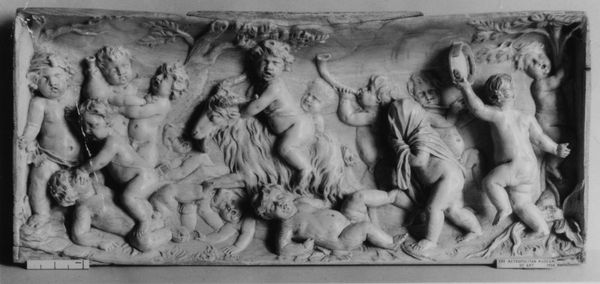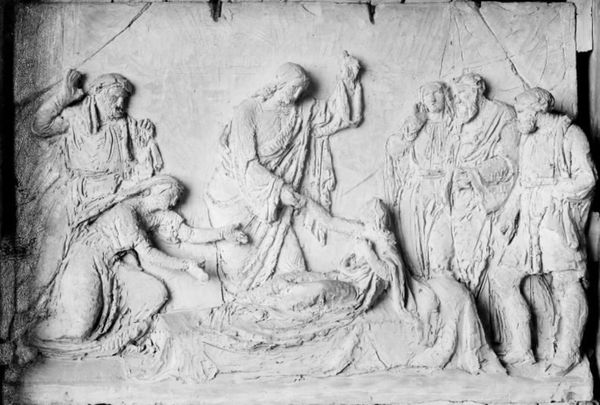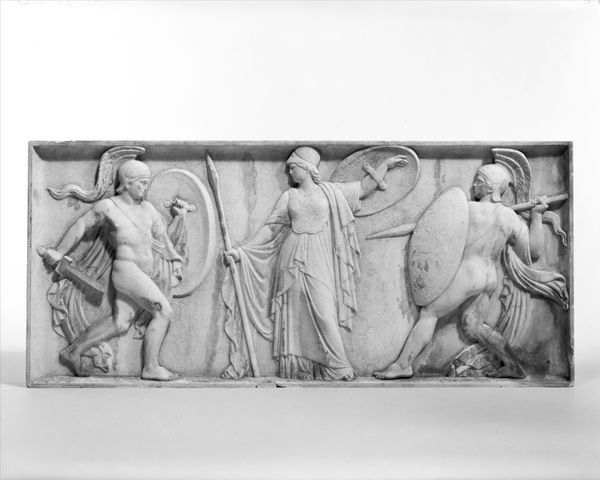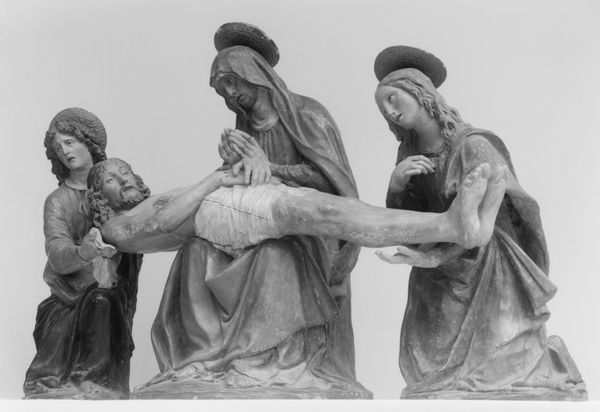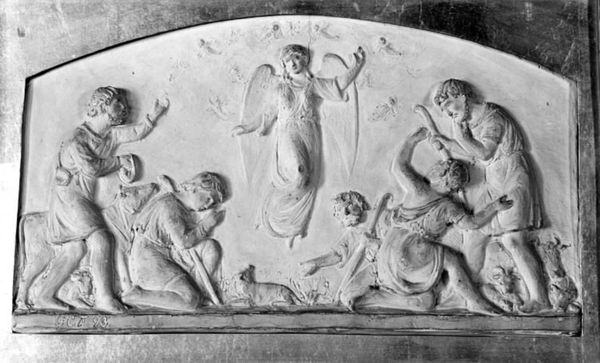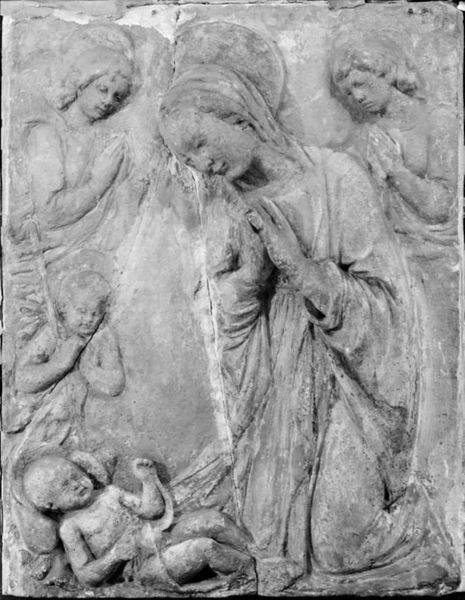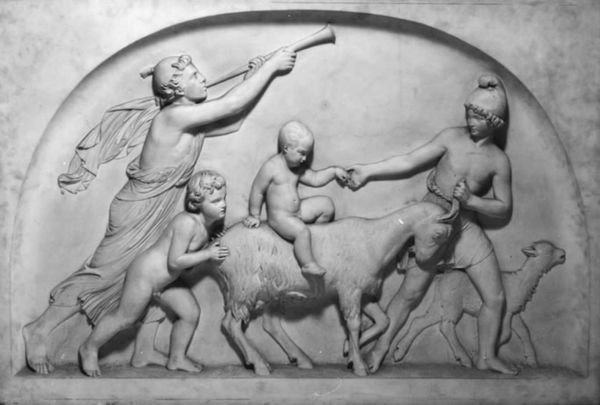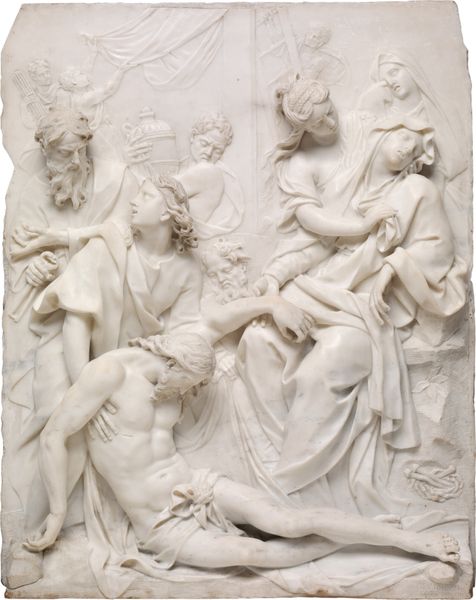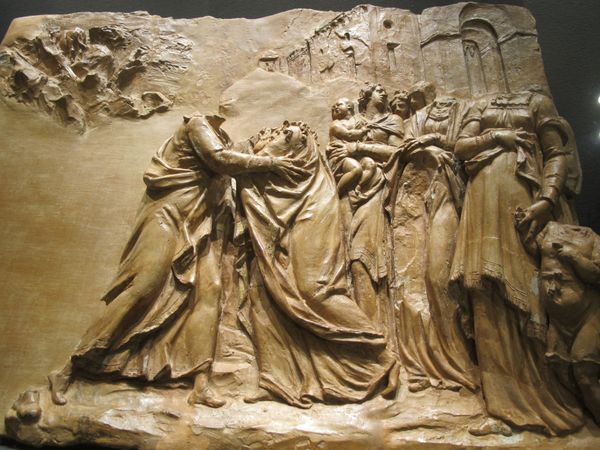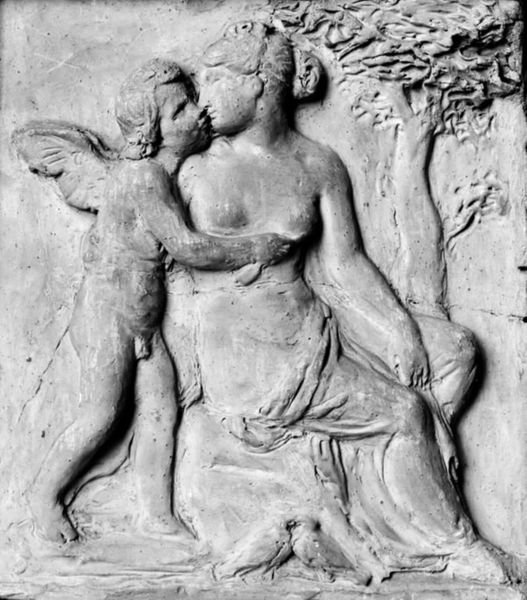
Priam holding the golden urn with the remains of Hector 19th century
0:00
0:00
relief, sculpture, marble
#
neoclassicism
#
sculpture
#
relief
#
figuration
#
sculpture
#
group-portraits
#
men
#
history-painting
#
academic-art
#
decorative-art
#
marble
Dimensions: Pedestal, 33-1/4 x 33 in. (84.5 x 83.8 cm); L. 46 in. (116.8 cm.)
Copyright: Public Domain
Giovanni Maria Benzoni carved this marble relief of Priam holding the remains of his son Hector in the 19th century. The sculpture illustrates a scene from Homer’s Iliad in which King Priam of Troy pleads with the Greek hero Achilles to return the body of his son, Hector, who Achilles killed in battle. Executed by an Italian artist, this sculpture exemplifies the neoclassical style which drew inspiration from the art and culture of ancient Greece and Rome. In the 19th century, a renewed interest in classical antiquity fueled artistic and intellectual movements, influencing fashion, architecture, and the arts across Europe and America. Museums played a crucial role in shaping and disseminating these ideals, assembling collections of classical art and artifacts for public display and study. The sculpture also reflects broader cultural values concerning heroism, mourning, and familial duty. By studying the artistic choices and historical context of works like these, we can gain insights into the social, cultural, and political forces that shaped the art world of the 19th century.
Comments
No comments
Be the first to comment and join the conversation on the ultimate creative platform.
